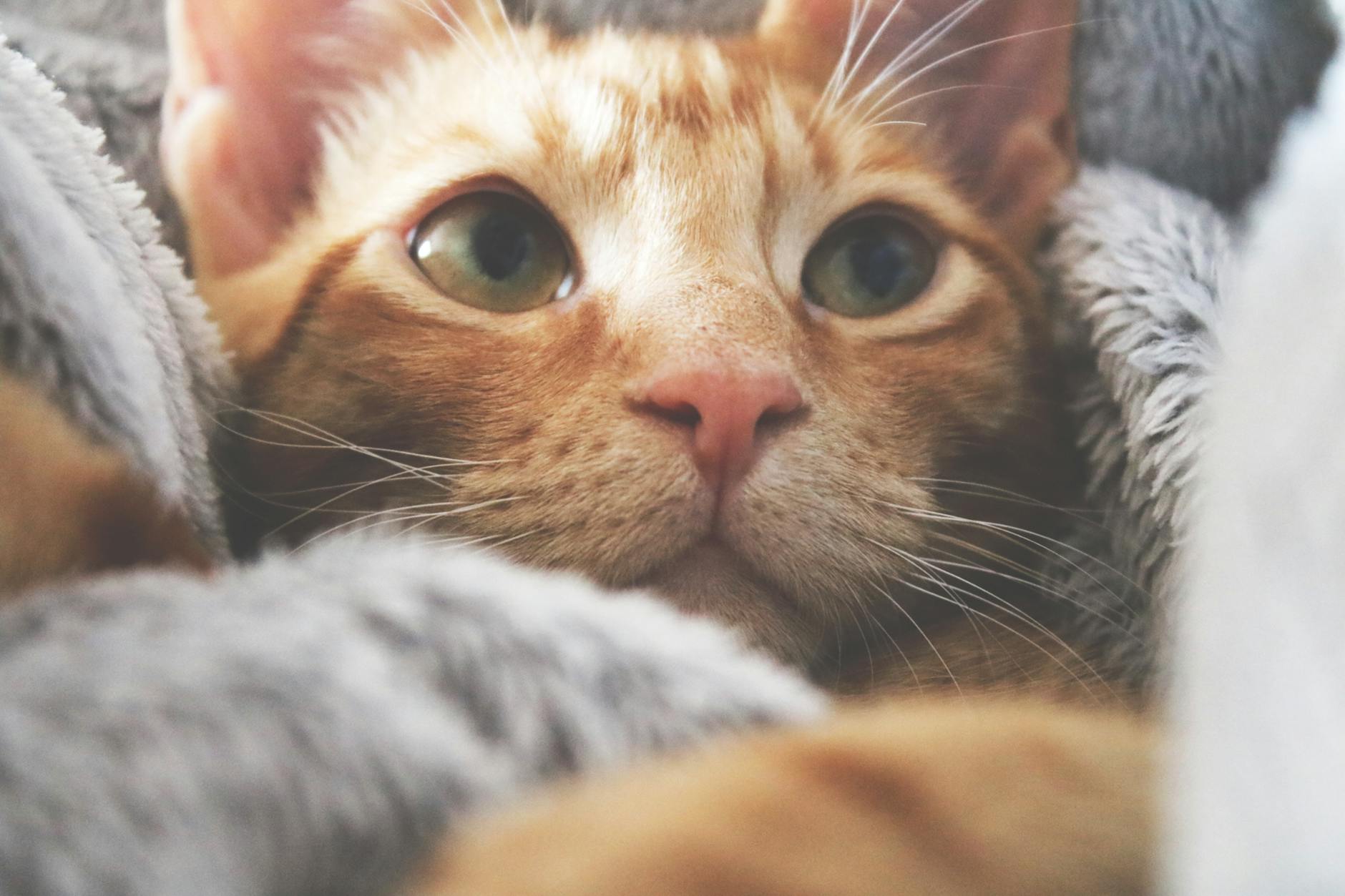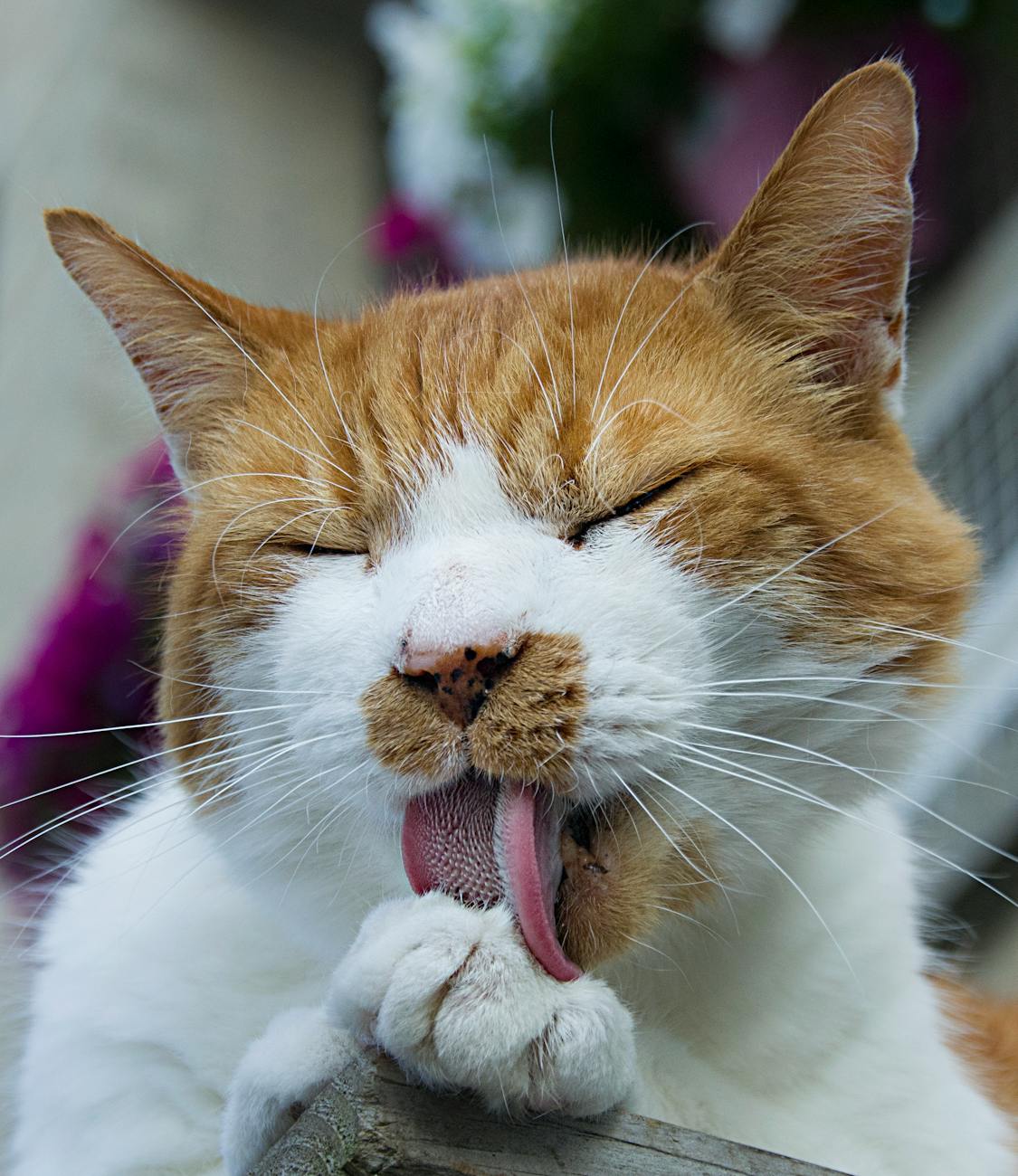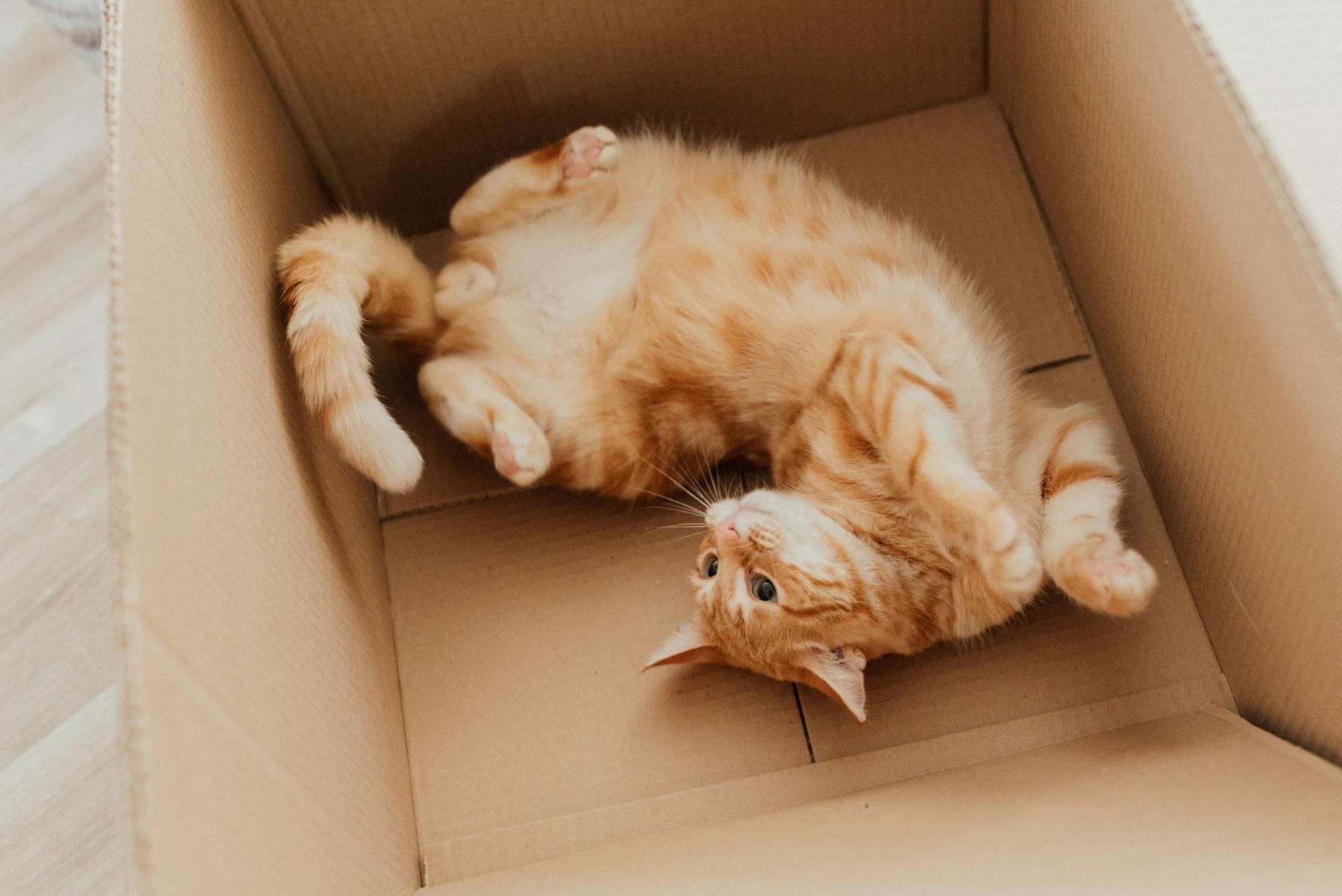We’ve compiled a list of 20 intriguing facts about cats. Whether you’re a long-time cat lover or a beginner to the world of whiskers, prepare to be fascinated by the charm and wonder that distinguish our beloved feline companions.
Cats are extraordinarily nimble creatures who have long wowed us with their graceful “Catwalk” and captivating sparkling eyes. Cats were once venerated as gods in various societies, and they are uniquely made and intriguing in many ways.
1. Cats use their whiskers to navigate
Whisker navigation in cats is a remarkable sensory adaptation that is essential for spatial awareness. These long, sensitive whiskers, found on either side of a cat’s face, are deeply entrenched in follicles that connect to the neurological system. Cats rely heavily on their whiskers to study and navigate their surroundings.

The incredibly sensitive touch receptors at the base of each whisker detect even the smallest variations in air currents and vibrations. Cats utilize their whiskers to measure gaps, calculate the breadth of openings, and detect close things in the dark. When a cat spreads its whiskers forward, it indicates interest or awareness. Some flat-faced cats have larger whiskers.
2. Cats frequently purr for healing purposes
Cats’ purring has been linked to both contentment and possibly medicinal powers. The low-frequency vibrations produced during purring, which range from 25 to 150 Hertz, are regarded to have therapeutic properties for cats.
According to one idea, the vibrations produced by purring may trigger the release of endorphins, resulting in a sensation of well-being and pain alleviation. Some studies even show that listening to a cat purring may have a relaxing impact on the human nervous system, thereby decreasing tension and blood pressure.
3. Their nose print is as unique as a human fingerprint
Each cat has a distinct nose print, much like humans have unique fingerprints. This is one of the most essential facts about cats. The pattern of ridges and bumps on a cat’s nose is unique, serving as a distinguishing feature.
The moist, hairless portion of a cat’s nose has a distinct set of lines and patterns that distinguishes one cat from another. The arrangement of the little, rough ridges, as well as the presence of tiny, microscopic patterns, give this nose print its distinct appearance.
4. They are among humanity’s oldest companions
Cats are among humanity’s oldest companions; thus, they occupy a special place. Their domestication extends back thousands of years, with evidence indicating that cats and humans formed mutually beneficial ties as early as the Neolithic period.
Cat domestication is said to have begun around 9,000 years ago in the Near East, notably in the Fertile Crescent. This region encompasses portions of modern-day Iraq, Syria, Iran, and Turkey.
5. Cats are meticulous groomers
Cats are known for their grooming routines. Adult cats may spend 30-50% of their awake hours grooming. They require less attention because they enjoy grooming themselves. Our team has also written on the ten easiest-to-groom cat breeds.
Cats have rough tongues, which are perfect for cleaning their fur, regulating body temperature, stimulating blood circulation, and removing loose hair, thus reducing hairballs. Kittens tend to groom more regularly. Furthermore, cats in multi-cat families may groom one another as a form of social connection.

6. Cats favor high-pitched sounds
Another intriguing fact about cats is that they have acute hearing across a wide frequency range. They are typically more sensitive to higher frequencies than humans. Cats’ hearing extends from approximately 48 Hz to 85 kHz, whereas humans’ range is 20 Hz to 20 kHz.
Cat toys frequently use high-pitched sounds to appeal to their innate impulses. They are tuned in to higher frequency sounds such as those made by small prey animals, birds, and kittens’ high-pitched calls.
7. They naturally have hunting instincts
Cats are natural hunters, with hunting impulses profoundly embedded in their evolutionary past. Domestic cats and wildcats have the same origin, and these hunting skills were necessary for survival in the wild.
They mark and defend areas in the same way that their wild relatives do. Kittens play in ways that simulate hunting activities, including chasing, pouncing, and batting at things. This play is used as practice for real-life hunting. Some cartoon cats, such as Tom and Jerry, exhibit the joyful hunting behavior seen in house cats.
8. They Display Distinctive Kneading Behaviour
The most unique facts about kittens include their kneading behavior. Kneading is a characteristic habit in cats that involves pushing their paws back and forth against a soft surface. This adorable movement originated in kittenhood, as it was used to encourage milk flow during feeding.
Even as adults, cats continue to exhibit this innate behavior as a show of satisfaction, comfort, and security. Kneading, sometimes accompanied by purring, is a symbol of relaxation and enjoyment. Cats use smell glands in their paw pads to mark territory; therefore, kneading is a type of territorial expression.
9. Cats have a very flexible spine
Cats’ spines are incredibly flexible, which adds to their outstanding agility and acrobatic ability. This flexibility is especially noticeable because the cat’s backbone has approximately 53 vertebrae, compared to 34 in humans.
The flexibility of a cat’s spine allows them to twist and shift their bodies with incredible accuracy. The cat’s elastic spine reflects its evolutionary adaptations as a nimble hunter.
10. They have excellent night vision
Cats have excellent night vision due to specific modifications in their eyes intended for low-light environments. This is due to a reflecting layer below their retinas known as the tapetum lucidum. This layer improves night vision by reflecting light, which increases sensitivity to even the faintest sources.
They have a bigger number of rod cells, which perform best in low light, as well as larger pupils that dilate broadly in darkness, allowing more light to enter. Their distinctive slit-shaped pupils also change quickly, enhancing vision in different light conditions. This particular capacity in cats makes them excellent predators at dawn and nightfall. Some green-eyed cats and slitted yellow-eyed cats are extremely stunning.
11. Cats have the superior jumping ability
Cats have higher jumping ability, which is attributed to their finely tuned anatomy and predatory instincts. Their robust rear leg muscles generate the explosive force required for spectacular leaps. Their flexible spine also allows them to crouch and coil, forming a spring-like mechanism before taking off into the air.
Cats, with their lightweight bodies and strong depth awareness, can easily navigate their environment, leaping onto perches or pursuing prey. This incredible jumping ability reflects their evolutionary adaptations, which improves their agility for both survival and the playful antics that make them so enjoyable.
12. Cats have a variety of vocalizations
Cats are exceptional communicators. With their wide range of vocalizations, they can express a variety of emotions and demands. From the iconic “meow” to quieter purrs, chirps, growls, and hisses, each vocalization has a specific purpose.
Cats frequently meow to communicate with humans, expressing hunger, greeting, or requesting attention. They purr when they are petted, hugged, feel comfortable, or are in distress. They can also chirp and chatter in brief, high-pitched sounds while watching birds or prey, exhibiting their hunting tendencies.

13. They are natural climbers who prefer heights
Cats are natural climbers with an innate love for heights, a characteristic profoundly ingrained in their evolutionary history. Cats feel safer at elevated positions because they can see their surroundings while keeping out of harm’s way.
Climbing is a sort of physical activity for cats that improves muscle strength and agility. It also fulfills their curiosity and desire to explore. Providing vertical areas in the home, such as cat trees, shelves, or perches, improves their physical and emotional well.
14. The Cat’s Tail Is An Effective Communication Tool
A cat’s tail can indicate a variety of emotions and intentions through its posture and movement. Understanding a cat’s tail language is essential for reading their emotions and maintaining pleasant interactions. The tails of cats, whether small or long, speak volumes.
An upright and quivering tail denotes enthusiasm and friendliness, but a puffed-up tail shows fear or defense. Similarly, a straight-up tail symbolizes confidence and pleasure, but a tucked tail represents submission or nervousness. When a cat wraps its tail around another, it communicates confidence and affection.
15. They just love to sleep
Cats are known for their love of slumber, earning them the nickname “professional nappers.” Cats sleep for an average of 12 – 16 hours each day, with some sleeping up to 20 hours, especially as they age.
They are good at napping softly and are aware of their surroundings even while they appear to be asleep. This extended sleep pattern is strongly imprinted in their evolutionary history as crepuscular hunters, allowing them to save energy for action at dawn and twilight.
16. They can move their ears independently
The movement of a cat’s ears is a finely tuned and highly expressive part of communication and sensory processing. They, like their tail, have amazing control over the direction and orientation of their ears, and varied ear positions communicate different emotions and states of attentiveness.
Cats can spin their ears independently to detect noises from various directions, demonstrating their remarkable hearing talents. When exploring or focusing on specific stimuli, they may move their ears forward. When a cat feels threatened, it positions itself sideways, backward, or flattened against the head. Cats with large ears are simple to recognize.
17. They have retractable claws
Cats have retractable claws, which is a fascinating adaptation that serves a variety of purposes in their daily life. When not in use, their claws are partially covered by skin and fur sheaths.
These claws aid in the precise gripping and scaling of vertical surfaces while climbing. Cats use their claws to defend themselves in confrontations or self-defense scenarios. They also used it to groom, clean their fur, and remove loose hair and debris.
18. Cats often have an inexplicable love for boxes
Cats love boxes, as anybody who has owned one knows. This preference for boxes can be linked to a combination of innate responses and environmental influences.
Boxes provide cats with a sense of security and safety, evoking the enclosed shelters that their wild ancestors sought for protection. Cardboard boxes are desirable resting places because of the warmth and insulation they provide, and the act of squeezing into a limited space may relieve stress.

19. Cats have a reflex to right themselves when they fall
Cats have a remarkable skill known as the righting reflex, which allows cats to realign themselves during a fall and land on their feet. Kittens normally begin to exhibit rudimentary righting reflex actions at around 3 weeks of age, and these abilities improve as they develop and learn coordination.
They have an extremely flexible spine. Their flexible spine allows them to twist and turn their bodies in midair. This righting reflex is an important survival mechanism that activates when a cat falls or jumps from a height, allowing them to avoid injury.
20. Cats lack taste receptors for sweetness
While humans have sweet-detecting taste buds, cats are obligate carnivores with a meat-based diet, and their taste receptors reflect this specialty.
Cats’ nutritional needs are based on protein and fat rather than carbohydrates or sweets. Cat owners should avoid sharing sweets with their feline pals. You can, however, provide them with cat-friendly human foods if desired.
To Conclude
There you have it. Now you have a basic understanding of cat behavior. We hope we’ve helped you understand cat language.
